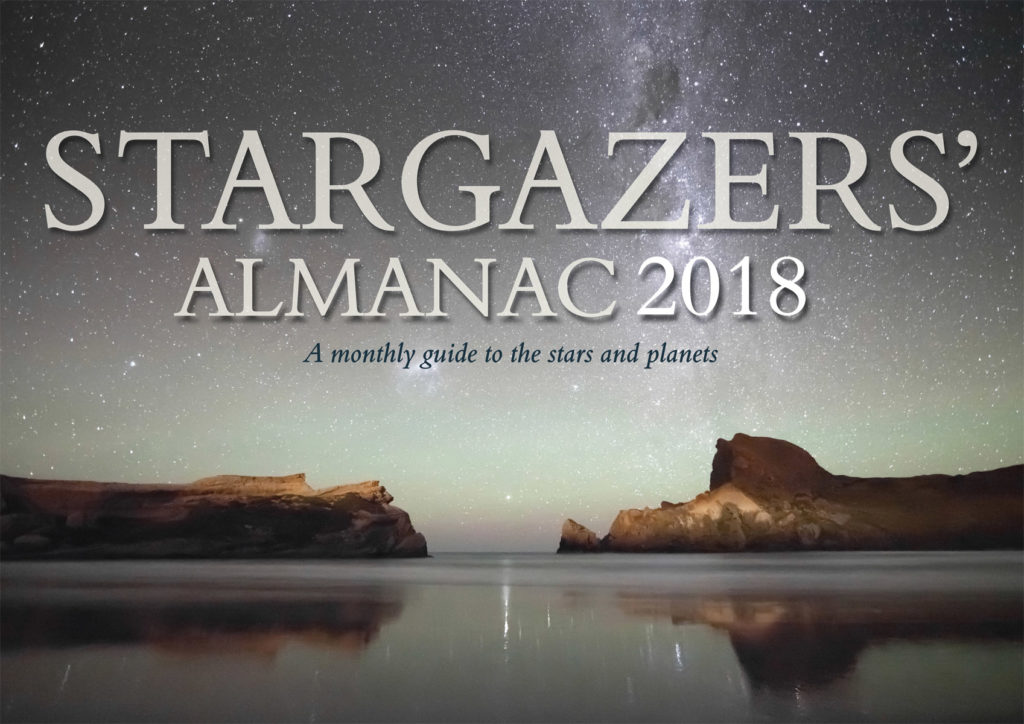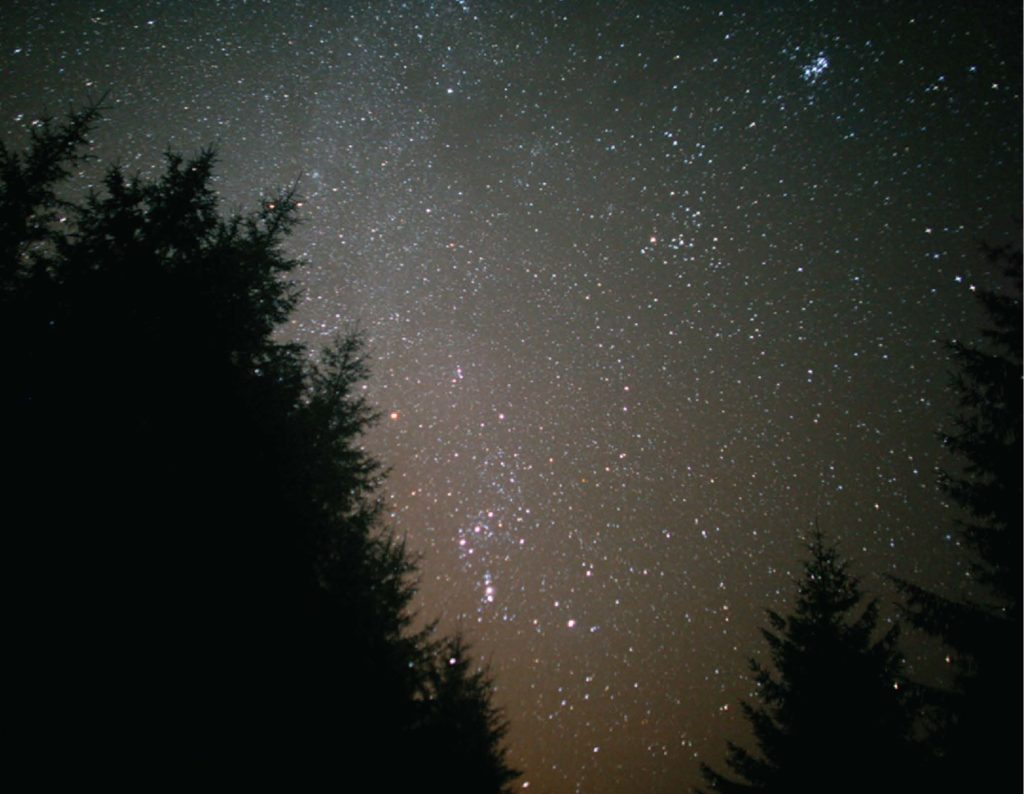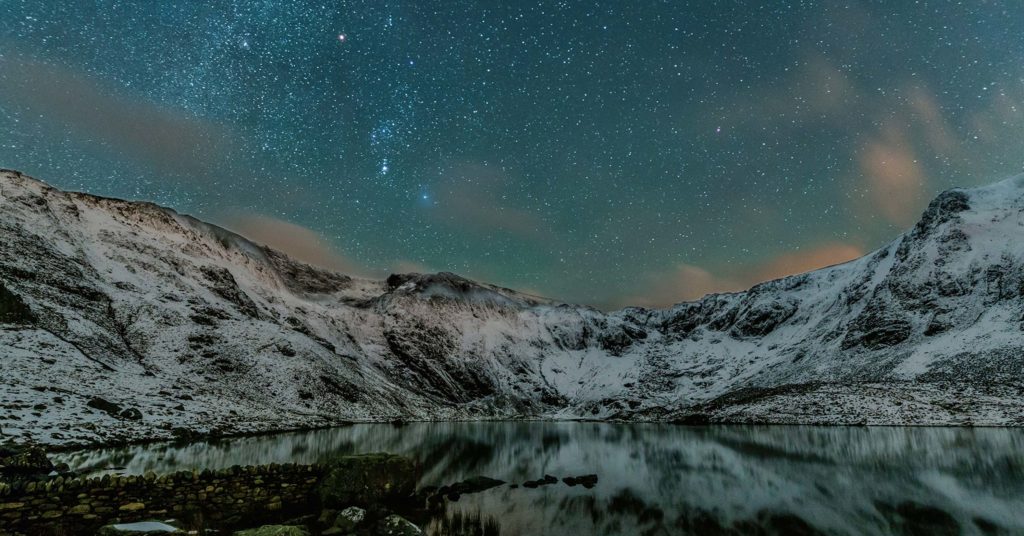Saving Our Dark Skies – Stargazers’ Almanac 2018
by Floris Books • 18 December 2017 • Astronomy, Bob Mizon, Stargazing • 0 Comments
Every year at Floris Books we publish the Stargazers’ Almanac, designed for naked-eye astronomy. The almanac helps us to explore the Milky Way from the comfort of our own back gardens. But as light pollution encroaches on our dark skies, it often seems increasingly difficult to appreciate our night skies.
Leading the campaign to save our dark skies is Stargazers’ Almanac author Bob Mizon MBE. In today’s blog post Bob explains exactly how we define dark skies, how they are measured and why it’s so important to battle light pollution.

The Fight to Save the Dark Skies
Of the four home countries of the United Kingdom it is England that is the most densely populated: it has few places left where a primeval starry sky can be appreciated in all its majesty. The others fare better, but the lack of regulation which allows artificial light to veil the night sky taints their starscapes too. The Commission for Dark Skies (CfDS), the Campaign to Protect Rural England (CPRE) (www.britastro.org/dark-skies, www.nightblight.cpre.org.uk) and other environmentally conscious bodies have been striving for decades to stem the tide of light pollution, working towards star-quality lighting and a better view of the heavens.
There are however reasons for optimism. Sites endorsed by Dark Sky Discovery (www.darkskydiscovery.org.uk), a UK-wide network of good observing places nominated by local groups, have increased in number. Public awareness of the need to counter light pollution has been raised by initiatives from the CfDS, CPRE and other groups. Their efforts have, as the lighting industry freely admits, been a weighty factor in the introduction to our main roads in recent years of strictly downward directed road lights. Almost all of the new LED road lights in the UK are designed to avoid upward emissions. The American International Dark-Sky Association (IDA), based in Tucson, Arizona, has added its weight to national efforts with its Dark Sky Places scheme: islands of guaranteed darkness are now established beneath some of our remaining starry night skies.
The Second Best Place For Dark-Sky Protection
UK astronomers, and indeed anybody who enjoys the rare sight of a pristine, star-filled sky, should be proud that their country has more dark-sky protected areas than any other in the world outside the USA. The large-scale organised protection of our stars began in November 2009, when the IDA awarded Galloway Forest Park in south-west Scotland the title of International Dark Sky Park: the first in the UK and only the fourth in the world.

Winter jewels over Craigencallie, Galloway Forest Park (Photo: James Hilder)
What are Dark Sky Parks?
These, along with Dark Sky Reserves and Communities, are areas which are fortunate enough to possess largely light-free night skies, where the Milky Way rides on high, displaying its intricate interplay of star clouds and dark dust lanes, and where meteors, aurorae and other phenomena can be fully enjoyed.
Why are they so special?
What makes these places very special is that dedicated teams of volunteers, or staff members in the case of National Parks and the like, have committed themselves to the preservation of those starry panoramas: they promote good lighting practice within their boundaries and raise public awareness of the value of dark skies and the need to avoid light pollution. A map of all the world’s designated IDA dark-sky sites can be found at darksky.org/idsp/finder. Their number increases steadily.
Dark Skies in the UK
Wales has a greater percentage of its land surface beneath protected stars than any other world nation. Eighteen per cent of the principality, in the Snowdonia and Brecon Beacons National Parks and the Elan Valley Estate in mid-Wales, guarantees darkness for night-sky observing. This is the fruit of great efforts by their environmental teams to ensure good lighting policies within their boundaries and raise awareness among locals of the value and beauty of starry skies.
England, arguably one of Europe’s most light-polluted countries, has nevertheless several islands of real darkness, from Exmoor National Park in the south-west to Kielder Water and Forest Park in the far north-east. Europe’s first Dark Sky Community, established in 2011, was the Channel Island protectorate of Sark.
Northern Ireland lacks Dark Sky preserves (though the Republic now has two), but some areas such as the Antrim coast are worth visiting for starwatching.
Measuring Sky Darkness
Readings of sky darkness are most often done with the Unihedron Sky Quality Meter (www.unihedron.com/projects/darksky/faqsqml.php), and photographic research with all-sky ordinary digital cameras mounted firmly on tripods. Such readings are carried out on clear, moonless nights. The meter has a button, and when it is pressed, a number (for example 21.33) appears on a screen. Any reading of 22 and above indicates a sky free of artificial light, with faint stars seen down to the horizon. From the outskirts of a town, 19 might be typical, while a brightly lit city centre would be unlikely to achieve a value of 17.
About the Stargazers’ Almanac
Discover our dark skies from your doorstep with the Stargazers’ Almanac 2018. Track the planets, locate the Milky Way, recognise the constellations of the zodiac and watch meteor showers. Perfect for amateur astronomers and seasoned starseekers alike.
